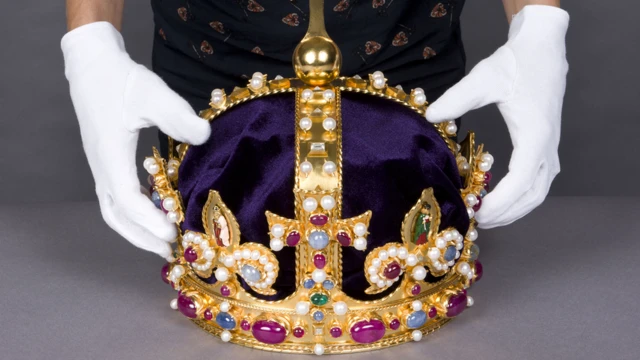In a stunning revelation that has sent shockwaves through the historical community, archaeologists have unearthed what is believed to be the long-lost tomb of King Henry VIII, nearly 500 years after his death. This groundbreaking discovery was made during restoration work beneath St. George’s Chapel at Windsor Castle, where Henry was thought to be buried alongside his third wife, Jane Seymour. The find, announced by a collaborative team from the UK’s Historic Royal Palaces and the University of Oxford, has reignited interest in one of England’s most infamous monarchs.

Ground-penetrating radar scans revealed a sealed underground chamber beneath a 19th-century floor edition, leading excavation teams to an ornate stone sarcophagus adorned with Tudor roses and gilded brass fragments. Initial examinations of the remains indicate a male skeleton in his mid-50s to early 60s, displaying significant deterioration consistent with historical accounts of Henry’s obesity and leg ulcers. Among the artifacts found nearby were a tarnished gold ring bearing the royal seal and a scepter handle carved with Tudor emblems.
Researchers believe the chamber was hastily constructed after Henry’s death in 1547, and later renovations obscured its entrance. For centuries, historians had concluded that the tomb had either been moved or destroyed, but this newly discovered vault appears untouched since the 16th century. Dating of organic materials around the burial site aligns with the late Tudor period, bolstering the claim that this is indeed Henry’s original resting place.
If confirmed, this discovery would mark one of the most significant royal archaeological finds in British history. Henry VIII’s reign fundamentally reshaped England through the Reformation, his six marriages, and the establishment of the Church of England. His remains, long thought lost, could provide unprecedented insights into Tudor burial practices and the treatment of royal remains.

As news of the find spreads, Windsor Castle has been sealed off to the public, and security has been heightened. Experts from the British Museum and the Royal Collection Trust have been brought in to assist with preservation efforts. The atmosphere among those present has been described as reverent and electric, with many workers reportedly moved to tears as the first fragments of the royal coffin were revealed.
Inside the chamber, archaeologists discovered intricate carvings on the stone walls, depictions of Tudor heraldry, and Latin inscriptions invoking divine kingship, including Henry’s personal motto, “Dur Mondroa.” Forensic specialists are currently working with the royal household to determine whether the remains should be reinterred in situ or relocated for public display.
The discovery has already sparked global attention, with historians calling it a once-in-a-lifetime find that could fill in missing chapters of Tudor history. As verification processes begin, speculation is rife about the implications of this discovery on our understanding of Henry VIII and his legacy. The burial chamber remains under 24-hour guard as conservation teams stabilize the environment, ensuring that this extraordinary find is preserved for future generations.

As excavation teams delve deeper into the site, they have begun to uncover further evidence suggesting a complex network of hidden vaults beneath St. George’s Chapel. This revelation has raised questions about the potential existence of additional royal remains, including those of Jane Seymour, who was believed to be buried alongside Henry.
With preliminary DNA testing and isotope analysis underway, the world waits with bated breath for confirmation of the identities of these remains. If authenticated, this site could become one of the most visited historical locations in England, rivaling the discovery of Richard III’s remains in Leicester in 2012.
The implications of this find are staggering, not just for historians, but for the public as well. The tomb of Henry VIII, once thought lost to time, has reemerged from the shadows, inviting us to confront the legacy of a monarch who forever changed the course of English history. As the excavation continues, the air is thick with anticipation, and the story of Henry VIII is poised for a remarkable new chapter.





